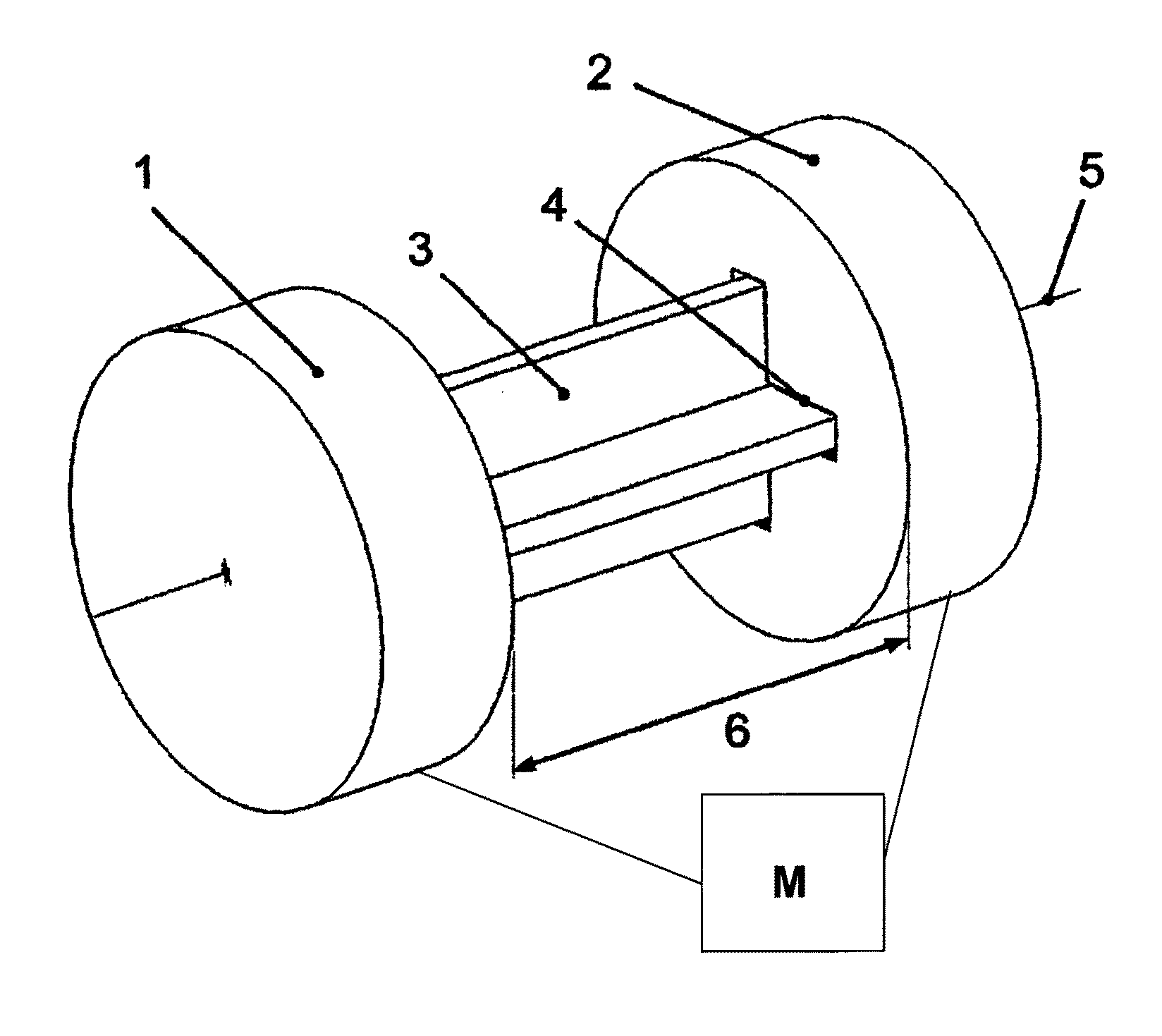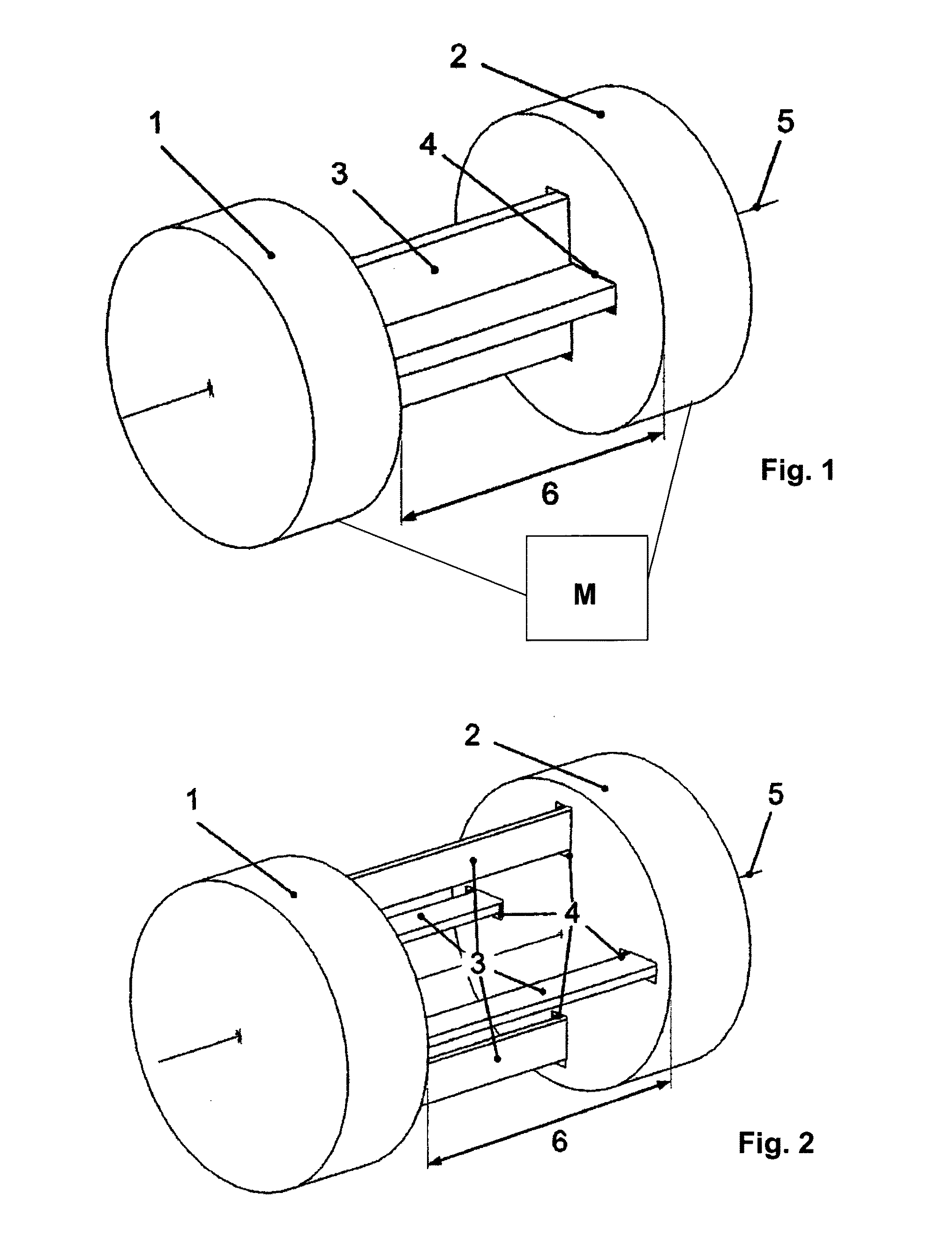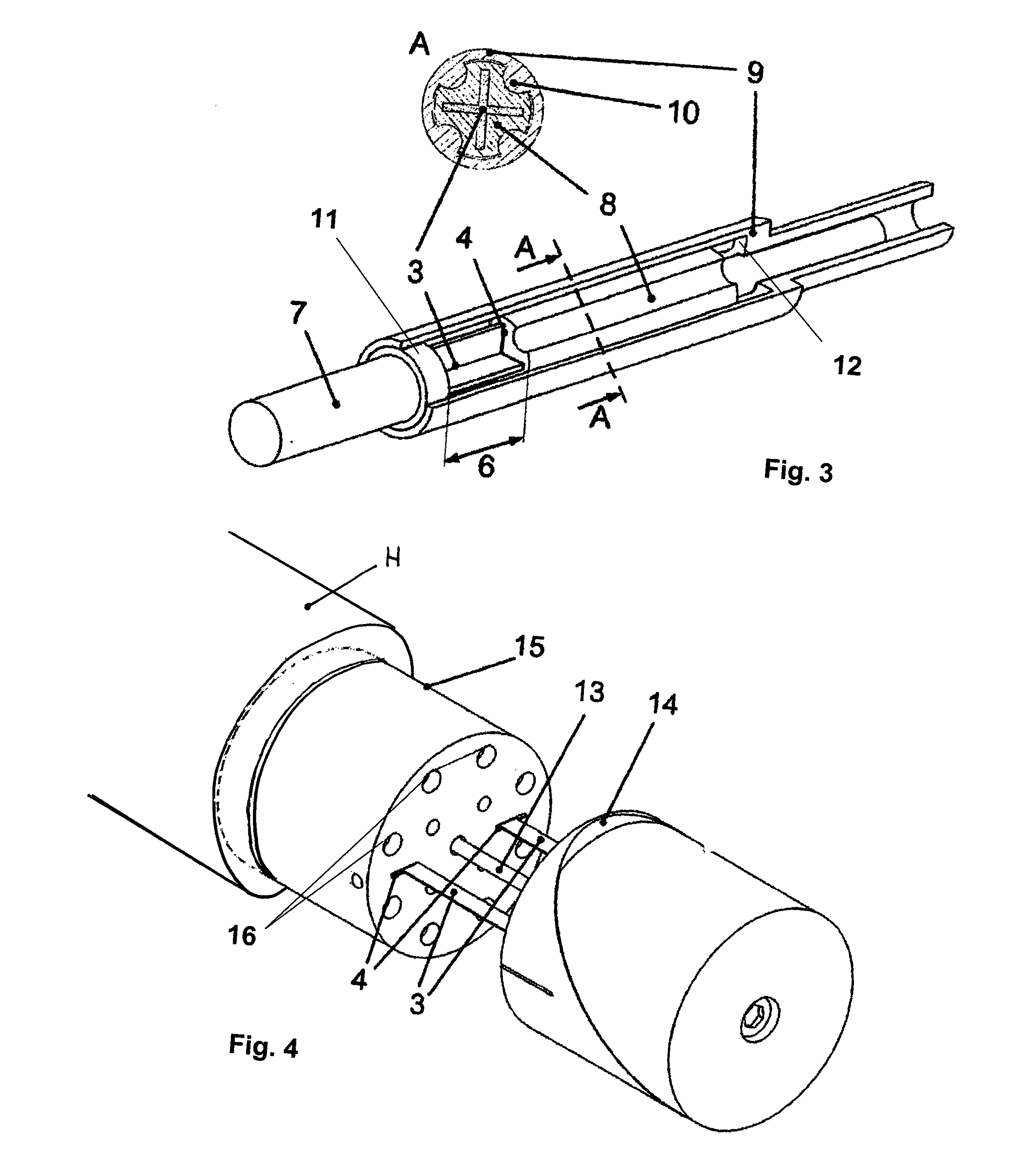Shaft arrangement and method for relaying torques acting around a rotational axis
- Summary
- Abstract
- Description
- Claims
- Application Information
AI Technical Summary
Benefits of technology
Problems solved by technology
Method used
Image
Examples
Embodiment Construction
[0034]FIG. 1 depicts a shaft arrangement that is pivoted around a rotational axis 5, whose torsional stiffness acting around the rotational axis 5 can be smoothly adjusted within certain limits. The shaft arrangement includes a first shaft section 1 along with a second shaft section 2, which operatively interact with each other by way of a torsion element 3. The two shaft sections 1 and 2 are mounted so that they can move relative to each other along the rotational axis 5. The torsion element 3, which is a rod or a cord profile having a cross-shaped cross section, is to this end unilaterally rigidly joined on the face with the first shaft section 1. That is, the torsion element 3 is firmly secured to the first shaft section 1 in a torque-proof and axially fixed manner. In contrast, the second shaft section 2 has a cross-shaped opening 4, through which the torsion element 3, which also has a cross-shaped cross section, can be passed in a precisely fitting and axially movable manner a...
PUM
 Login to View More
Login to View More Abstract
Description
Claims
Application Information
 Login to View More
Login to View More - R&D
- Intellectual Property
- Life Sciences
- Materials
- Tech Scout
- Unparalleled Data Quality
- Higher Quality Content
- 60% Fewer Hallucinations
Browse by: Latest US Patents, China's latest patents, Technical Efficacy Thesaurus, Application Domain, Technology Topic, Popular Technical Reports.
© 2025 PatSnap. All rights reserved.Legal|Privacy policy|Modern Slavery Act Transparency Statement|Sitemap|About US| Contact US: help@patsnap.com



